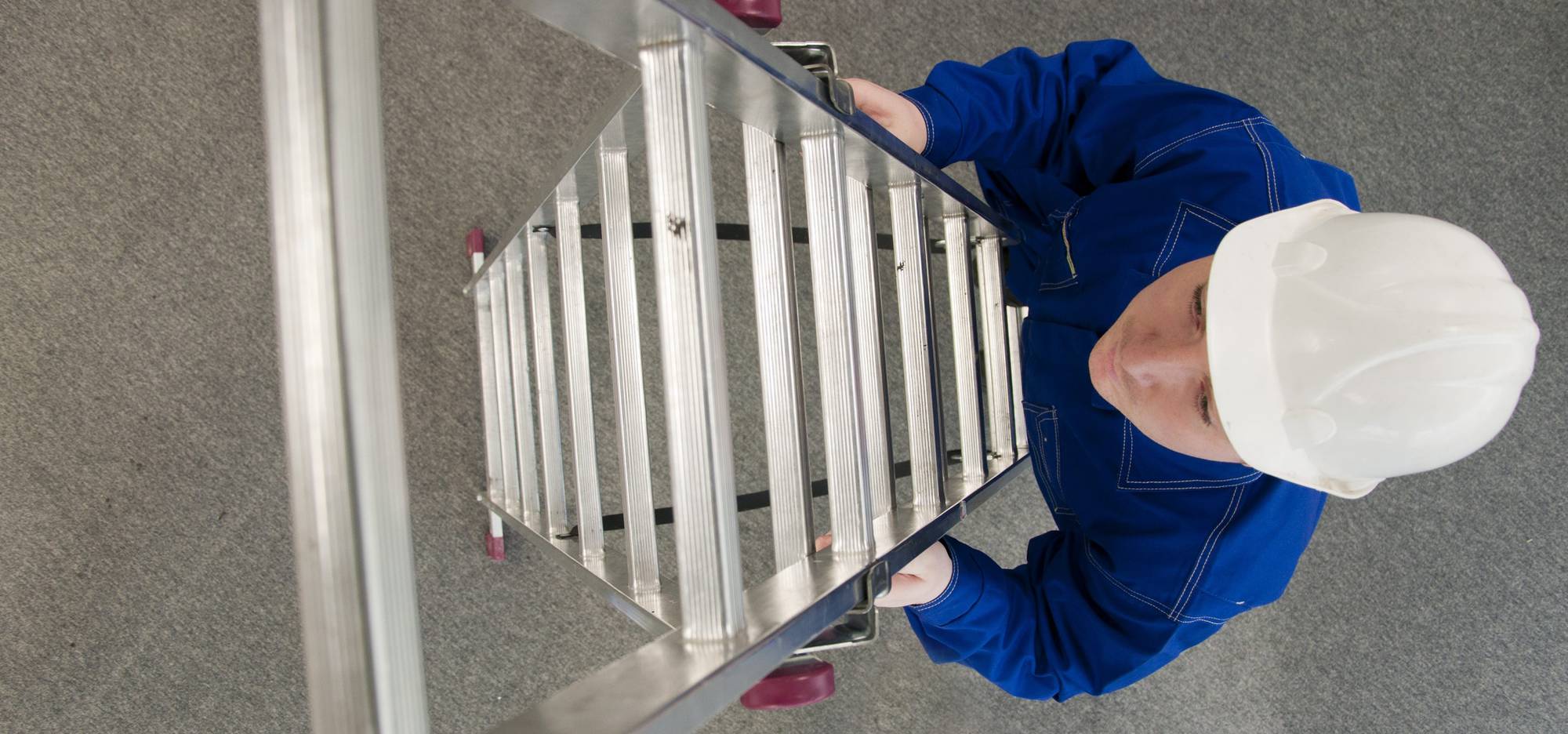Last week we took a look at the deadliest jobs in construction. One of the stats we discussed was the fact that about 34% of all construction worker deaths are caused by falls. What might surprise you is the fact that falls from ladders account for about 28% of those deaths.
The construction standard for ladders (1926.1053) is consistently the third most cited OSHA violation every year for the industry, just behind duty to have fall protection and general requirements for scaffolds.
Despite all this, ladder safety often gets overlooked at the construction site. For example, did you know that employers are required to provide training conducted by a competent person to all employees using ladders and stairways in construction? This is probably due to the fact that ladders are such a common piece of equipment on construction sites and are used by so many professions in the industry. I was doing some ladder work over the weekend and was quickly reminded of just how dangerous it can be.
Improper use, using damaged ladders, incorrect ladder choice, and improper setup are all leading causes of ladder falls. We’ve put together a list of do’s and don’ts of ladder safety based on OSHA’s Construction Industry Standard for Ladders – 1926.1053.
Do’s
✔️Get properly trained before using a ladder. Employers should provide training by a competent person. Training should include recognizing ladder hazards, fall protection systems, proper use, handling, and placement of ladders, and the maximum load-carrying capacities of ladders.
✔️Select the right ladder for the job. Ladders are rated for different load capacities. The weight of the worker along with any tools or materials being carried should be considered. Ladders should extend far enough that a worker won’t have to overextend themselves to reach the work area. If exposure to electrical hazards is possible, select a ladder made of nonconductive materials such as fiberglass.
✔️Inspect all ladders before each use to make sure they are in good working condition and free of any visible defects. Damaged ladders should be taken out of use and properly marked so they won’t be used again until they can be repaired or replaced. Ladders should be inspected periodically by a competent person.
✔️Maintain three points of contact (either two hands and a foot or two feet and a hand) at all times when climbing up and down a ladder. Tools and materials should be carried using a tool belt or hauled up by rope once a worker has stopped climbing. Also, be sure to wear non-slip shoes when working on ladders.
✔️Ensure proper set up of ladders before use. If using ladders to access another level, they should extend at least three feet above the upper landing surface. Ladders should be placed on level surfaces and secured at the base and top support whenever possible to prevent slipping. Make sure rungs are locked into place on extension ladders and spreaders are locked into place on stepladders.
✔️Set non-self-supporting ladders at the proper angle before use. A 4:1 ratio should be used, meaning the base of the ladder should be 1 foot away from the support for every 4 feet of working length. Place your toes against the bottom of the ladder’s side rails and extend your hands straight out while standing erect. Your palms should touch the top of the rung at shoulder level.
Don’ts
🚫Stand on the top step or rung of a stepladder unless the label states it is safe to do so. Most don’t. You shouldn’t stand on the top rung of a single or extension ladder. The fourth rung from the top is the highest you should stand when working on these types of ladders. Any higher and you are likely to lose your balance and fall.
🚫Lean away from a ladder or overreach in any direction. Keep your weight centered between the vertical side rails and your feet straight ahead. Never stand sideways on a ladder. If you can’t reach your work area without overextending yourself, climb down the ladder and reposition it.
🚫Attempt to move or reposition a ladder while you are standing on it. Never try to hop or shuffle a ladder into a new position while you are still on it, even if it’s just a couple of inches. This may seem convenient, but it is extremely dangerous. Take the extra time to completely descend the ladder before repositioning it.
🚫Place a ladder on uneven ground or another object to reach a higher point. If the ladder isn’t tall enough for you to safely work, either get a taller ladder or find some other means of reaching your work area.
🚫Tie or attach multiple ladders together to create longer sections, unless they were specifically made to do so. Don’t use a ladder for anything other than its intended purpose, such as platforms or walkways.
🚫Use a ladder if you have to hold heavy items, work at height for extended periods of time or stand sideways on the ladder. Ladders aren’t always the right tool for the job. Consider erecting some scaffolding or bringing in a scissor lift to meet your needs.
🚫Face away from the ladder when climbing down or performing work. You can’t maintain three points of contact this way and it shifts your weight away from the angle of the ladder which can cause you to lose your balance and fall.
About Kendall Jones
Kendall Jones is the Editor in Chief at ConstructConnect. He has been writing about the construction industry for years, covering a wide range of topics from safety and technology to industry news and operating insights.


 Sign In
Sign In


